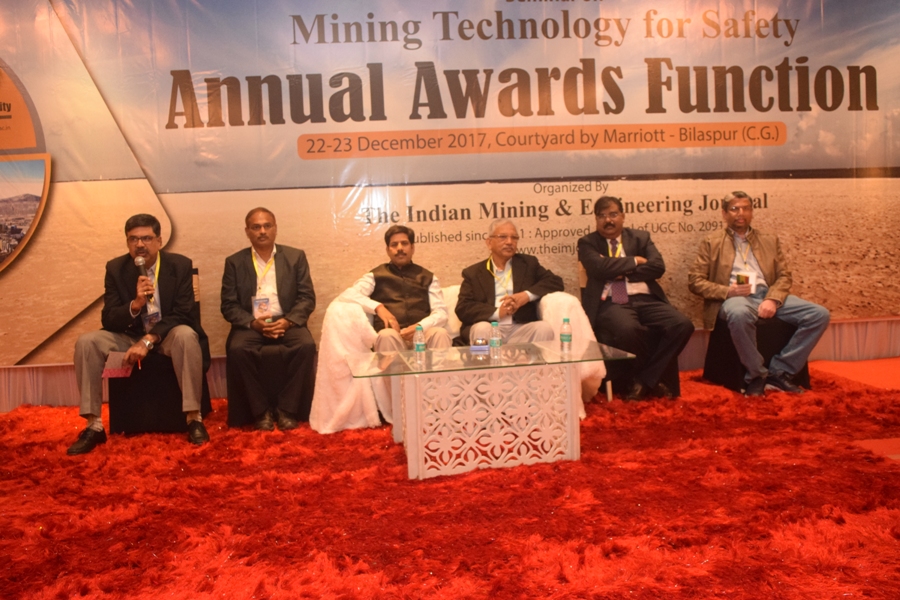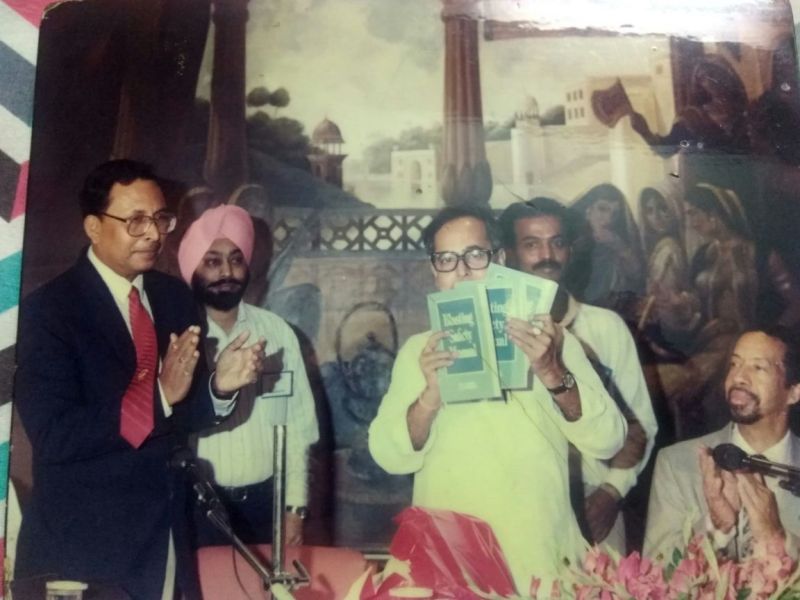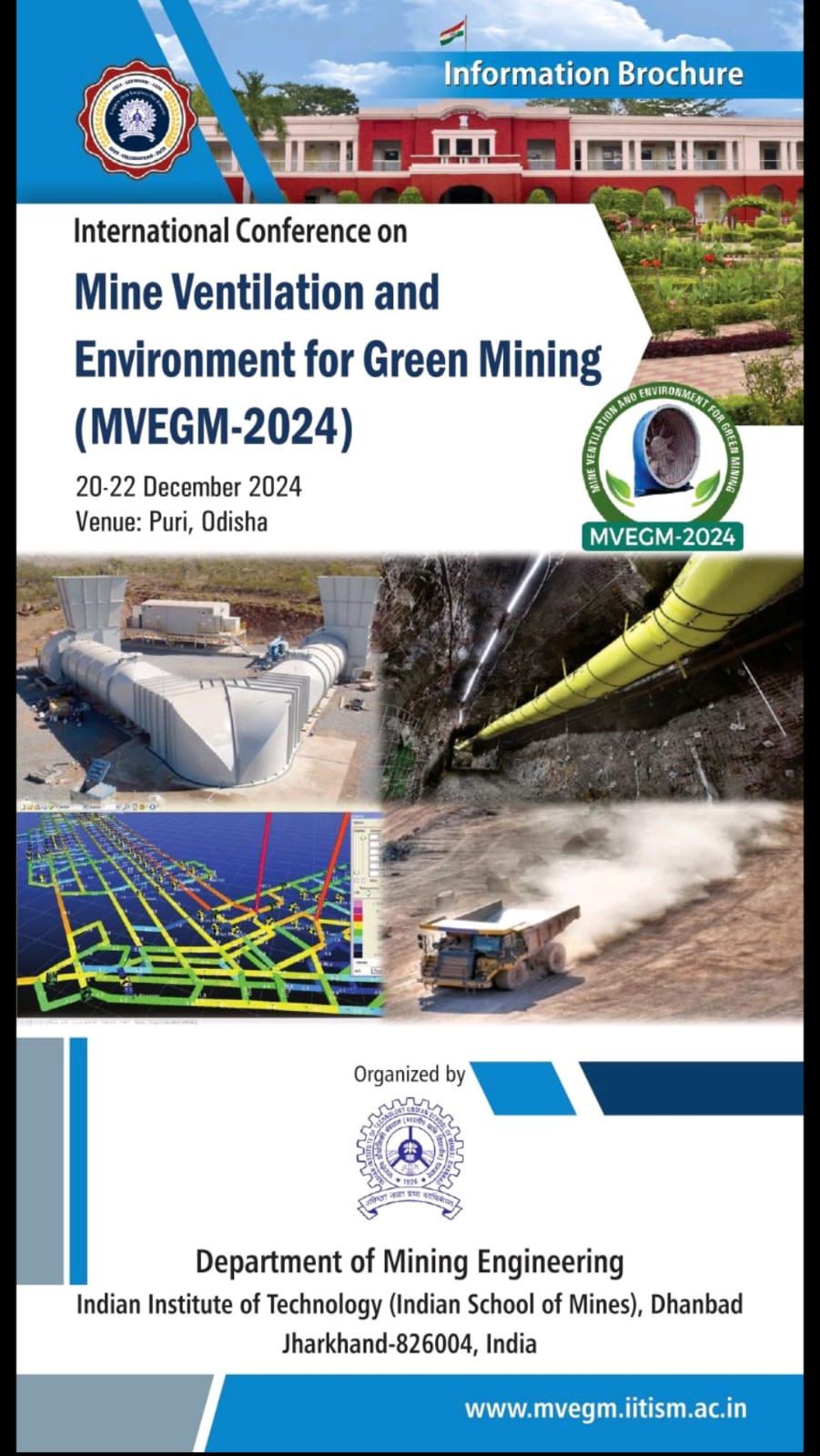T S Cherian, Executive Director,BIOM , Bacheli Complex, NMDC Ltd

T S Cherian, Executive Director,BIOM , Bacheli Complex, NMDC Ltd
Arun Misra, VP (Gopalpur Project) & Chairman, of TATA Steel SEZ
Arun Misra, VP(Gopalpur Project) & Chairman, of TATA Steel SEZ will take over as Vice President(Raw Materials) of Tata Steel. He has been working with Tata Steel at various capacities since 1988. He is an alumnus of IIT, Kharagpur. Misra started his career as maintenance engineer in the Coal Washeries, and moved to lead the Coal Beneficiation Group at West Bokaro in the capacity of Chief (Coal Beneficiation) in the year 2003. He was earlier General Manager(OMQ Division) of Tata Steel at Noamundi. He was appointed as Deputy Vice President (Operations-KPO) of Tata Steel in 2012 and subsequently he was designated as Vice President (Operations, KPO) in 2014. At present, he is serving as the Vice President (Project Gopalpur) and Chairman (Tata Steel SEZ Ltd), a 100% subsidiary of Tata Steel Ltd. He is also the Vice President of Indian Institute of Mineral Engineers and has published papers in their journal of national repute. He is credited with the unique achievement of upgrading Indian semi-coking coal of high impurities to imported coking coal quality.
Kaushlendra Kumar Mishra took over the charge of Director(Technical) of CMPDI on Thursday. Earlier, Mishra was General Manager(Mining), Piparwar area, CCL. Mishra obtained Mining Engineering Degree from Indian School of Mines, Dhanbad in 1985, He passed First Class Mine Manager’s Certificate of Competency examination from DGMS in the year 1989. He did his MBA from Punjab Technical University in 2012. He started his career in the coal industry from Amlai Colliery of SECL in the year 1985. Moreover, he served in various capacities and advanced progressively. He has held different responsible positions in different subsidiaries of Coal India like CCL, MCL & SECL.
UGC Approved list of journal No. 20912
ISSN No. 0019-5944
Reviewers are Invited
Mail Your Profile To :
This email address is being protected from spambots. You need JavaScript enabled to view it.
News Paper Regd. no. R.N. 6462/62
Registered No. BN/41/18-20 (POSTAL)
Contact Us
Corresspondance Address
The IM& E Journal
1457, Fishery Tank Road,
Chintamaniswar, Laxmisagarpatna,
Bhubaneswar - 751006, Odisha
Mobile: +91-9861008387
Mail: This email address is being protected from spambots. You need JavaScript enabled to view it.
Branch office :Near TV Tower, JODA, Dt. Keonjhar 758034
Phone: 06767-273173
Article structure
The manuscript should be compiled in the following order: The manuscript should be compiled in the following order: Novelty Statement, List of five referees with their full contact information, Title, Authors & Affiliations, Abstract, Keywords, Introduction, Experimental, Results and Discussion, Conclusion, Acknowledgments, References and Notes, Legends, Tables, Figures, and Schemes.
Novelty Statement: A statement of novelty should be provided in not more than 100 words giving a brief description of the original research conducted in the submitted manuscript.
Title: The title should be brief, specific, and rich in informative words; it should not contain any literature references or compound numbers.
Authors and Affiliations: Where possible, supply given names, middle initials, and family names for complete identification. Use superscript lowercase letters to indicate different addresses, which should be as detailed as possible and must include the country name. The corresponding author should be indicated with an asterisk, and contact details (email, fax) should be placed in a footnote. Information relating to other authors (e.g., present addresses) should be placed in footnotes indicated by the appropriate symbols (overleaf).
Abstracts: Authors must include a short abstract of approx 100 - 300 words that states briefly the purpose of the research, the principal results, and major conclusions. References and compound numbers should not be mentioned in the abstract unless full details are given.
Keywords: Authors should provide with at least 4 keywords that define the major areas of the manuscript's focus of research. These keywords will be used for indexing purpose.
Introduction
The author(s) should endeavor to define the significance of the work and the justification for its publication. Any background discussion should be brief and restricted to relevant material.
Material and methods (Experimental or Methodology)
Authors should be as concise as possible in experimental viagra pas cher descriptions. The experimental section must contain all of the information necessary to assurance reproducibility. Previously published methods should be indicated by a reference and only relevant modifications should be described. All vendor details, including company, city, and country, should be mentioned for chemicals, reagents, strains, etc. For statistical analysis, please state the appropriate test(s) in addition to hypothesized p-value or significant level (for example 0.05).
Results
The study results should be clear and concise. Restrict the use of tables and figures to depict data that is essential to the message and interpretation of the study. Do not duplicate data in both figures and tables. The results should be presented in a logical sequence in the text, tables and illustrations.
Discussion
This should explore the significance of the results of the work, not repeat them. Include in the discussion the implications of the findings and their limitations, how the findings fit into the context of other relevant work, and directions for future research.
Conclusion(s)
The main conclusion(s) of the study should be presented in a short conclusion statement that can stand alone and be linked with the goals of the study. State new hypotheses when warranted.
Include recommendations when appropriate. Unqualified statements and conclusions not completely supported by the obtained data should be avoided.
Acknowledgements: An acknowledgement section may be included. It should be placed after the manuscript text and before the references.
Abbreviations: Standard ACS abbreviations should be used throughout the manuscript and are employed without periods. The preferred forms for some of the more commonly used abbreviations are mp, bp, μC, K, min, h, mL, μL, g, mg, μg, cm, mm, nm, mol, mmol, μmol, M, mM, μM, ppm, HPLC, TLC, GC, 13C NMR, 1H NMR, GCMS, HRMS, FABHRMS, UV, FTIR, EPR, ESR, DNase, IV, XRD, EDX, XPS, ED50, ID50, IC50, LD50, im, ip, iv, mRNA, RNase, rRNA, tRNA, cpm, Ci, dpm, Vmax, Km, k, t1/2. All nonstandard abbreviations should be defined following the first use of the abbreviation.
References Citation in text: All citations in the text should refer to:
1. Single author: the author's name (without initials, unless there is ambiguity) and the year of publication (Smith, 2003)
2. Two authors: both authors' names and the year of publication (Smith & Jones, 2004)
3. Three, four or five authors: all authors names and year of publication (Smith, Jones, & Brown, 2005). For all subsequent citations of this work use et al. (Smith et al., 2005).
4. Six or more authors: first author's name followed by et al. and the year of publication (Black et al., 2007). Citations may be made directly or parenthetically. Groups of references should be listed first alphabetically, then chronologically, e.g., (Allan, 1996a, b, 1999; Allan & Jones, 1995; Allen et al., 1994). Kramer et al. (2000) have recently shown..."














